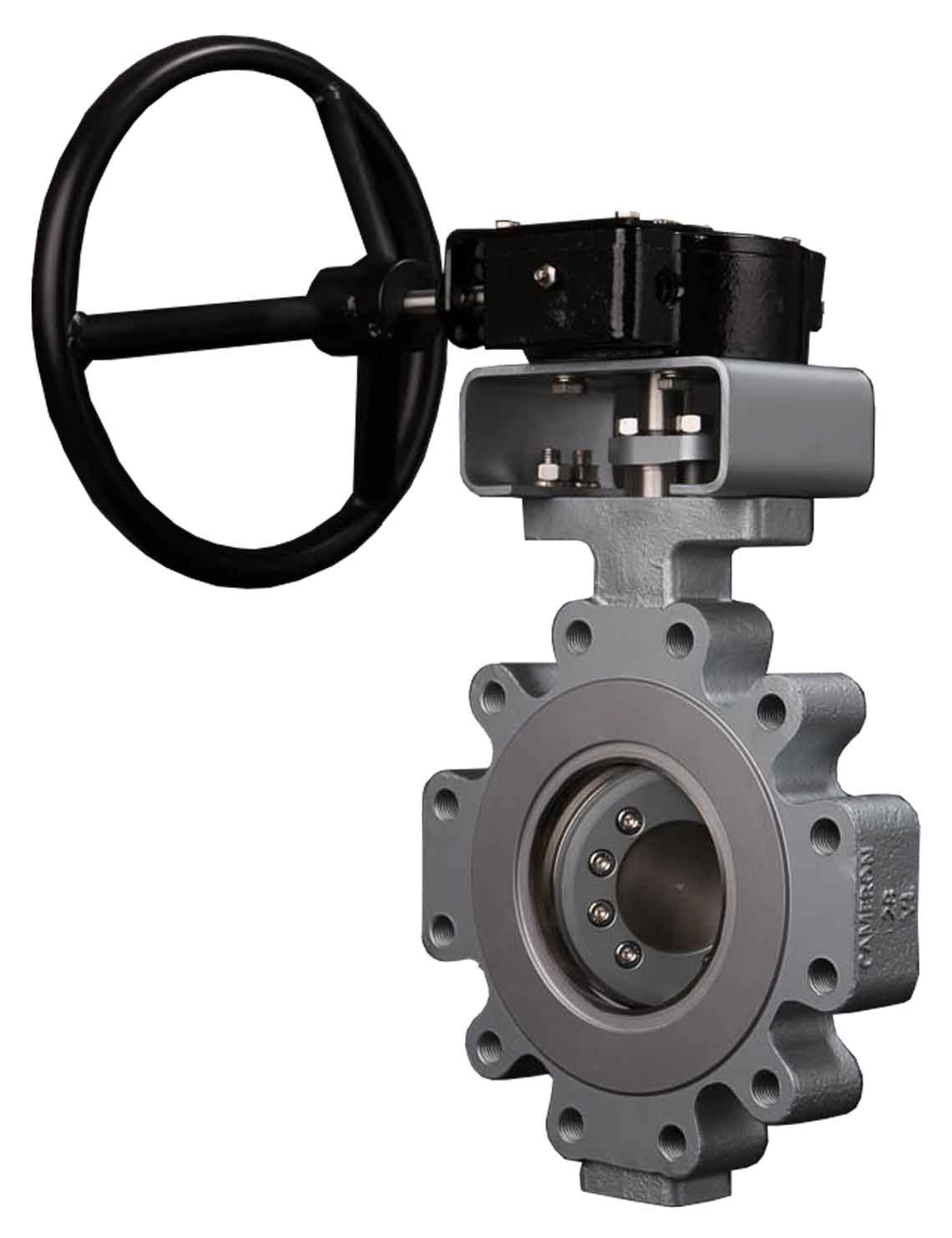Sealing performance of a ball or gate valve but in a much smaller profile.
How It Works: Butterfly Valves
Published: 06/30/2015

How It Works: Butterfly Valves
Published: 06/30/2015

According to the British Valve and Actuator Association, a butterfly valve is “a valve in which the obturator rotates about an axis at right angles to the direction of flow, and in the open position, flow passes around the obturator.”
In other words, a butterfly valve consists of a circular disc or plate built with a stem through the middle or attached offset. When opened, the disc pivots 90° in the valve bore, aligning with the flow and creating a nearly unrestricted flow path. Like ball valves, butterfly valves rotate 90° to enable quick shutoff.
Types
Resilient-seated butterfly valves are the most basic design and are also commonly called concentric or resilient-seated butterfly valves. In this type of valve, the stem is centered in the middle of the valve disc, which is centered in the pipe bore. This valve typically has a rubber (or resilient) seat and relies on the disc having a high level of contact with the seat to effect a seal. The disc will contact the seat the earliest (±85°) during the 90° rotation.
DEMCO valves are durable resilient-seated valves that feature a one-piece body for reduced weight and increased strength. Their unique stem hole design in the disc ensures a dry stem journal, and the hard-backed seat enables ease of installation, reliable operation, and field replacement without special tools. DEMCO valves are well proved in industrial and commercial applications.

Single-offset butterfly valves have a stem that is located behind the disc. There are few, if any, valves of this type on the market today because of the development of the double-offset, or high-performance, valve. The single offset of the stem causes the disc to contact the seat with 3° to 4° left to travel; this design was enacted because less seat contact is thought to enable longer valve life.
Double-offset (high-performance) butterfly valves have a disc with two offsets and can be rated up to 1,480 psi [10 MPa]. Similar to a single-offset design, the double-offset butterfly valve has a stem which is located behind the disc. With the high-performance butterfly valve, the second offset’s stem is moved once more off the center of the disc to one side. This offset geometry enables the 90° disc rotation to rub over the seat for only 1° to 3° of the 90° rotation.
The double-offset butterfly valve is used in systems requiring higher pressure resistance. The disc is positioned in the center of the pipe bore and arranged to increase sealing ability and decrease wear to the valve.
WKM valves include high-performance butterfly valves that are ideal for handling water, oil, steam, and gas in a cost-effective, lightweight design. Their corrosion-resistant, single-component thrust bearing and disc spacer reduces body wear and helps ensure positive centering of disc in the valve bore.
Both resilient and high-performance butterfly valves can be operated by handles, gears, or actuators. These devices move the valve disc to the optimal position for complete shutoff or fully open the valve. Resilient and high-performance butterfly valves are used mainly in the water, chemical, and petrochemical industries and can also be used in fuel handling systems, power, and many other applications.

Triple-offset valves (TOVs) are applied in difficult services in which reliable performance under harsh conditions is required. Exactly like a double-offset valve, the stem is located behind the disc and offset to one side (double offset). The third offset is the geometry of the seating surface. This seating surface creates a cone shape of the disc and seat that wedges into the seat with minimal contact between the sealing surfaces until the valve is fully closed. By reducing the amount of contact that the seat has with the disc, sealing becomes more efficient, and the life of the valve is extended.
Unlike single- and double-offset butterfly valves, TOVs are typically metal seated. The Cameron WKM TOV has a metal-seat design, which enables achieving zero leakage (per API 598) in either direction for extreme services. The true triple-offset geometry of the WKM TOV enables bubble-tight (per API 598) sealing to create a fully bidirectional zero-leakage shutoff valve.
TOVs are commonly used in steam, chemical, refining, and offshore oil and gas applications up to 1,400 degF [760 degC]. The rugged metal seats can also withstand a high degree of abrasion and shock and, with appropriate material selection, can also be utilized in cryogenic services such as LNG and natural gas liquids facilities.
Applications
Engineered for long-term, maintenance-free performance, butterfly valves are commonly selected for a variety of applications spanning a wide range of industries, including food and beverage, dry bulk handling, and oil and gas drilling and production.
